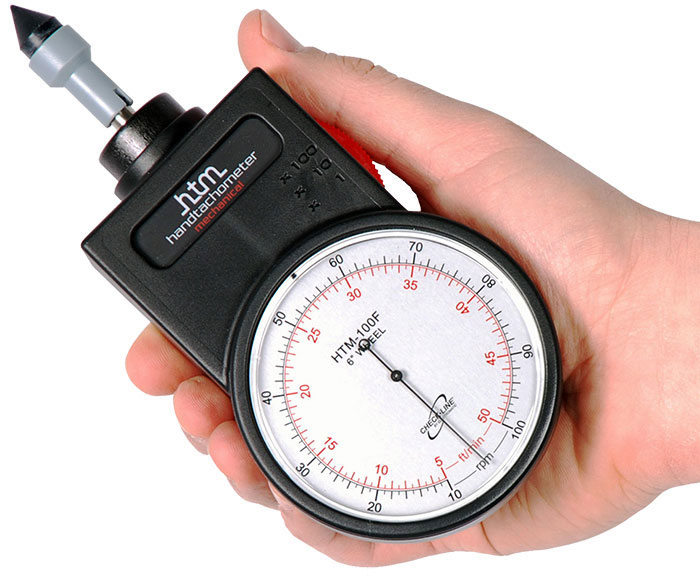Tachometer Purchasing Guide: Functions to Try To Find and Best Brands
Tachometer Purchasing Guide: Functions to Try To Find and Best Brands
Blog Article
Unlocking the Secrets of Tachometers: Everything You Need to Understand About This Essential Instrument in Your Car
Understanding the ins and outs of tachometers can offer useful insights right into your car's performance and upkeep requirements. From measuring engine rate to understanding the data it provides, tachometers function as a vital tool for car proprietors and fanatics alike. By deciphering the mysteries behind this essential instrument, you can open a riches of details that can boost your driving experience and make sure the durability of your lorry.
Relevance of Tachometers
The value of tachometers depends on their capacity to provide vital real-time information about an engine's rotational rate, enabling specific surveillance and upkeep of machinery. By determining the changes per min (RPM) of an engine's crankshaft, tachometers offer beneficial insights into the engine's efficiency - tachometer. This data is necessary for making certain that the engine operates within its ideal range, avoiding potential damage from over-revving or underperforming
Tachometers play a crucial function in aiding operators and technicians detect any abnormalities in the engine's rate, which might show problems such as gas inadequacy, mechanical troubles, or extreme stress on the engine. By without delay recognizing these concerns via tachometer readings, upkeep can be done proactively, protecting against expensive repair work and downtime over time.
Additionally, tachometers are especially critical in high-performance lorries and equipment, where exact control over engine speed is needed for optimal procedure. Competing autos, aircraft, and industrial equipment count on tachometers to supply peak performance while preserving safety criteria. Fundamentally, tachometers are not just instruments for determining rate yet crucial tools for ensuring the smooth and reliable procedure of engines across various applications.
How Tachometers Step Engine Rate
Making use of sensors that detect the regularity of electric pulses generated by the engine's ignition system, tachometers precisely measure the rotational rate of an engine. By monitoring the rate at which these pulses are gotten, tachometers offer real-time feedback on just how quickly the engine's crankshaft is rotating per min, commonly referred to as revolutions per minute (RPM)
The tachometer's sensing unit, usually linked to the engine's ignition coil or ignition system cables, chooses up the electric signals generated each time a cylinder fires. These signals are after that exchanged RPM analyses displayed on the scale or tool cluster within the chauffeur's view. Tachometers can be analog or electronic, with modern vehicles frequently including digital screens for specific and instantaneous RPM analyses.
This info is essential for vehicle drivers to understand the engine's efficiency, stop over-revving, enhance equipment changing, and make sure effective gas usage. By properly measuring engine speed, tachometers play a crucial duty in aiding motorists operate their cars securely and efficiently.
Translating Tachometer Analyses
Having a clear understanding of how tachometers measure engine speed establishes the foundation for properly interpreting the RPM readings displayed. Translating tachometer analyses is important for ideal car efficiency and engine health and wellness. RPM link (Transformations Per Min) analyses on the tachometer indicate the speed at which the engine's crankshaft is turning. When the engine is idling, the tachometer needle typically rests around 600-1000 RPM, depending on the car. As you accelerate, the RPM will increase, mirroring the engine's higher rotational rate. When shifting equipments in a manual transmission vehicle, the RPM will certainly drop as you engage the clutch and adjustment gears, after that rise once more as you speed up in the new equipment. Checking the tachometer can help you identify the most effective shifting factors to make the most of fuel economy and engine power. Additionally, abnormal fluctuations or constantly high RPM analyses might indicate potential problems with the engine that might call for specialist focus. By focusing on the tachometer readings and understanding how to interpret them, you can guarantee your car operates smoothly and successfully.


Tips for Using Tachometers Successfully
To improve driving efficiency and optimize engine performance, what secret approaches can be implemented for effectively using tachometers? Tachometers are critical tools that supply real-time comments on engine speed, allowing chauffeurs to make educated choices for far better performance - tachometer. Below are some ideas for utilizing tachometers properly:
Comprehending Optimal RPM Array: Familiarize yourself with the optimum RPM (Changes Per Minute) variety for your lorry. Maintaining the engine within this array can boost fuel efficiency and extend the engine's life expectancy.
Moving Equipments at the Right Time: Utilize the tachometer to establish the ideal time to change gears. Aim to shift equipments when the RPM reaches the optimal variety for the next equipment.
Keeping Track Of Engine Stress: High RPMs for long term periods can stress the engine. Maintain an eye on the read the article tachometer to avoid over-revving, especially during acceleration or when carrying heavy tons.
Tachometers and Vehicle Upkeep
When taking into consideration vehicle upkeep, tachometers play an important function in checking engine performance and detecting prospective problems. Tachometers supply crucial information on engine speed, allowing vehicle drivers and mechanics to make sure that the engine is running within the suggested RPM variety. Frequently keeping track of the tachometer analyses can help identify problems such as engine misfires, damaged ignition system, or problems with the gas shipment system. By focusing on the tachometer, chauffeurs can avoid extreme strain on the engine, which can cause pricey fixings down the line.
In enhancement to finding potential concerns, tachometers can additionally aid in optimizing fuel efficiency. By maintaining the engine rate within the optimal variety, drivers can improve their gas mileage and minimize gas usage. This not only benefits the vehicle driver's wallet yet additionally adds to environmental conservation by lowering harmful exhausts.
Conclusion

Report this page